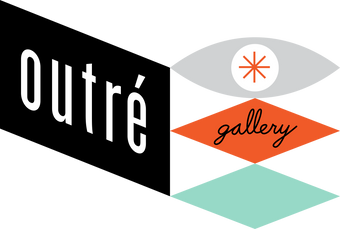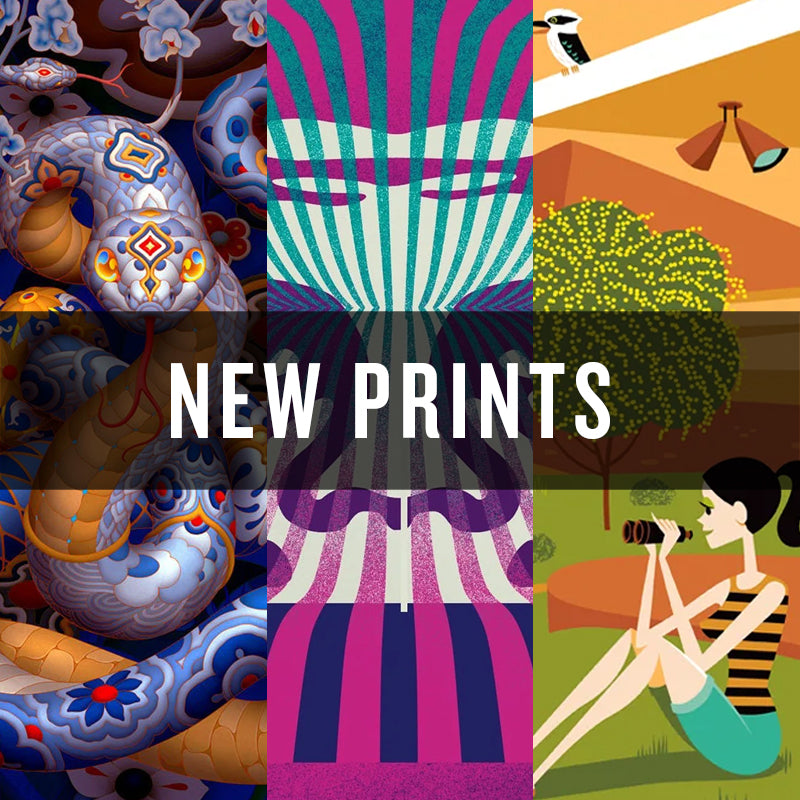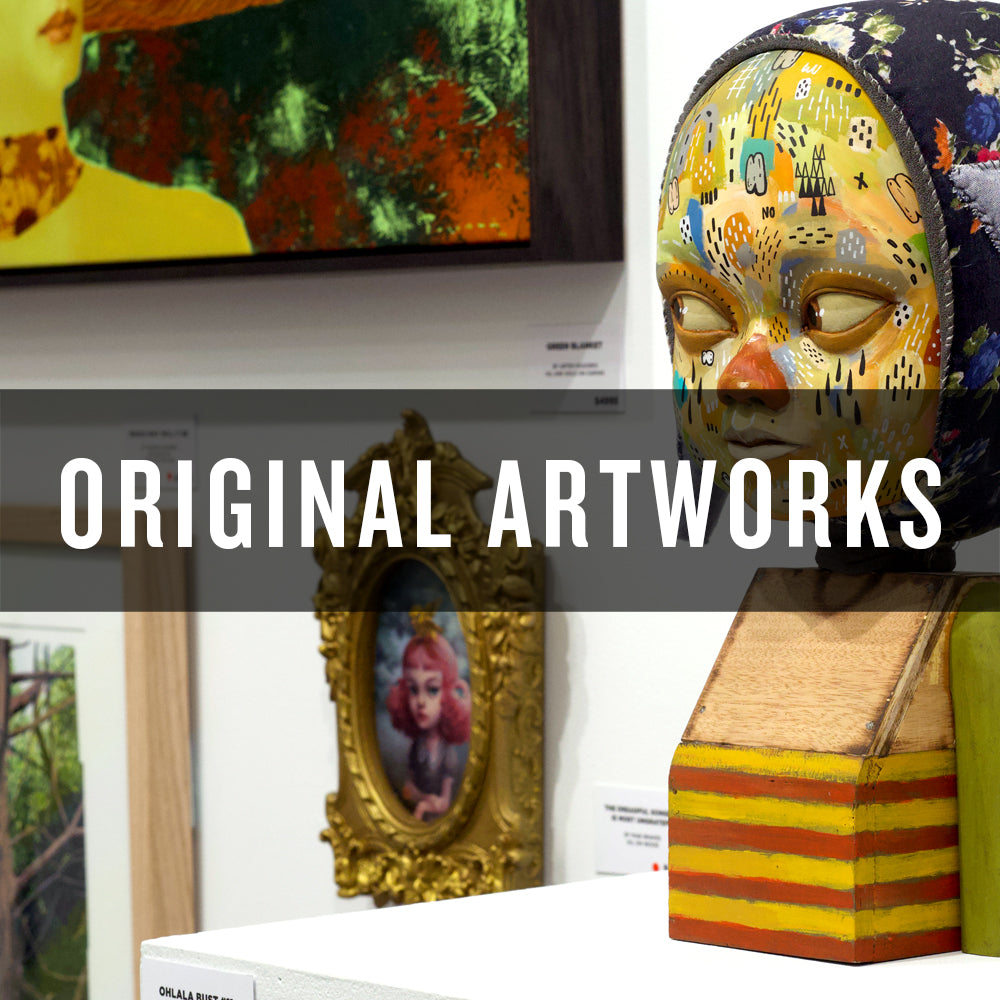
Drawing his inspiration from the natural world, the scientific and the surreal we have Melbourne-based fine artist and illustrator Erik Sherman kicking off our second Small Wall Show of the year.
Working almost exclusively in watercolour and gouache, he draws inspiration from scientific illustration to create re-imagined naturalistic environments. His upcoming show, The Safety of Infinity represents an astronomical exploration of decontextualised spaces and their temporary inhabitants.
Curious to find out more about these surreal worlds, we ask him about his journey as an artist and discover the philosophies behind his subject matter.

Could you tell us a bit about your background? How and when did your creative journey begin and what are some big movements that have helped you get where you are today?
I’ve always loved to create things, but as a child this was realised through more physical means: building intricate domino structures, marble tracks, or chain reactions that would fill an entire room. What eventually drew me to painting was the ability to create without limitations. The work I do now couldn’t be done any other way - painting doesn’t have to obey the laws of physics, and the environments I paint don’t actually exist, nor do the creatures - there’s much greater scope for experimentation.
I wouldn’t say there have been big movements, it’s been a more gradual evolution of medium and exploring different ways of creating. Whether it be building structures or painting, I’m attracted to very procedural creation. The trial-and-error and experimentation all happen before brush meets paper, so by the time I begin painting, I know exactly what the finished product will look like.
Whether it be intentional or not, art tends to carry on characteristics from its creator. What do you think your art reveals about you?
The lack of human subjects is probably telling. The creation of these floating self-sustained systems probably expresses my desire for seclusion and independence. A lot of my process involves taking something dependent on its surroundings and liberating it from them. I find decontextualised environments very soothing - there’s a calmness from knowing that nothing can interrupt you.
The most significant themes in your works feature animals and nature. What draws you to these themes?
Visually, the natural world is full of so much variety, and so much of it is still inaccessible. I wouldn’t say my creations are speculative, but I’m certainly influenced by the fact that we have only explored 5% of the world’s oceans - there is so much that we still haven’t seen. There is this pervasive feeling that the world is all mapped out, so I like to hint at the unknown and undiscovered in my work. Evolution is also an inspiration: while humans make environments adapt to them, animals adapt - I think that reflects a very different relationship to their surroundings, and one that I’m very intrigued by.
Who are some of your biggest creative influences or idols?
Many of my influences aren’t artists - I’m probably more affected by nature documentaries, astronomy, the natural world, the feeling you experience when you’re exposed to the universe. Concepts in astronomy are so huge size-wise, it’s fun shrinking them down to match the world of my animals. I also like seeing representations of the natural world in art, particularly anatomical drawings and scientific illustration. Surrealism has been a huge influence, but I look at it almost in contrast to my own art. At one point I thought my work would head down a more surreal path, but I realised I wanted stronger ties to reality than that. I like having one or two fantastical elements in each piece, but pared back.

In your upcoming show The Safety of Infinity many of your artworks feature curious mandala or geometric type structures, can you tell us why this is a recurring theme?
I like to use both organic shapes and rigid geometric structures, juxtaposing or combining them. Recently I’ve been painting them as growing wood, playing with the idea that they grew that way. They could also be looked at as the physical manifestation of a solitary mood - I like to evoke the feeling of bearing witness to an isolated, self-contained space. You’ll notice that the structures usually house birds in these pieces - who isn’t intrigued by the power of flight, and their ability to access spaces we can’t?
Your upcoming exhibition at Outré is on February 16th, how long have you been preparing for the show?
I was invited to contribute to the Small Wall Project in August, and from then on have been working exclusively on pieces for the show, adding to my existing body of work so I could exhibit a more cohesive collection. It’s my first exhibition, so curating a selection of my work was definitely a new experience.
Out of all the pieces for The Safety of Infinity, can you pick a piece and tell us about the story behind it and the process it took to bring it together?
For the second last piece I created for the show, Meteorite, I was looking at my existing pieces and realised that I wanted something with movement, as the others are quite static. The geometric structures in the other pieces are almost like celestial bodies, so keeping with the spatial feel I designed a winding geometric construction plunging into a suspended disc of water, representing a meteorite penetrating the Earth’s atmosphere. The bird featured is the Cape gannet, nicknamed “nature’s missile”, which made it the perfect accompaniment.

Can you tell us about your creative space? Where do you work best and what kind of mediums do you use?
I work from home - I’m very fortunate in that I work mostly with watercolour and gouache, so don’t have to worry about fumes. I’ve always worked best in my own space, removed from other people’s schedules - there’s less awareness of time passing. I’m a few floors up from the street, and appreciate the distance the elevation provides too.
In some of your past work you went through a series of drawing animals that were both delightful on the eyes and the tastebuds, what’s the story behind those delicious exotics?
Much of it resulted from me quite simply thinking: what if? It was very tongue-in-cheek - it’s fun to take something like a snail and merge it with an ice-cream to disrupt the viewer’s sensory experience: should they still find the soft-serve appealing, or should they be disgusted by its slimy host?
At other times it was just the reverse: I love anatomical diagrams, but cross sections showing an animal’s insides aren’t very palatable - what if it was cut open to reveal a fruit? My impulse is to unite disparate elements to surprise people. In some respects I haven’t strayed too far from this concept - in my current series, instead of changing the animal I create an environment for it. Maybe next we’ll see both.
ERIK SHERMAN - THE SAFETY OF INFINITY
EXHIBITING IN THE SMALL WALL PROJECT
OUTRÉ GALLERY MELBOURNE
FEB 16TH - FEB 25TH
OPENING DRINKS FRIDAY FEBRUARY 16TH 6PM TO 8PM.



